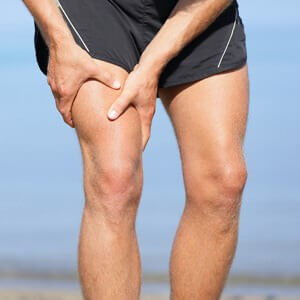Muscle cramp is an involuntary contraction of a muscle. It can be agonising and unexpected, but it usually occurs either during or following bouts of unaccustomed activity.
No doubt you will have read many theories as to why this may be including dehydration, vitamin and mineral deficiencies and electrolyte imbalance. There is little evidence to support any of these claims however.
What does seem consistent is the change in activity levels that usually precedes any incident of cramping. This gives a clue as to the likely cause.

In a recent study of triathletes in South Africa, researchers found that there was no difference in either hydration levels or sodium levels between triathletes that cramped and those who didn’t. The only predictive factor was a faster than average race time for that particular athlete and a history of cramping in the last 10 races. In other words, those athletes that had finished in a quicker time than was expected of them were more at risk of cramping. This can be considered a bout of unaccustomed activity.
What is also telling is that cramp is more common in the early season of any given sport and that it usually occurs towards the end of the game or race. I remember during my cycle racing career I only ever cramped early season or when the distances I was competing at suddenly increased.
Cramp is not limited to sport’s people of course. Remember that a change in activity levels, whatever they may be, can increase the likelihood of cramp. This can be something seemingly innocuous like suddenly increasing the distance you walk one day, or spending longer than usual gardening on a sunny day.
While it might be unpleasant at the time, cramp is a very clear message from your central nervous system (CNS) that limits have been breached and you need to stop whatever you are doing and listen to your body. Ultimately your CNS has your best interests at heart and its warnings should be heeded.